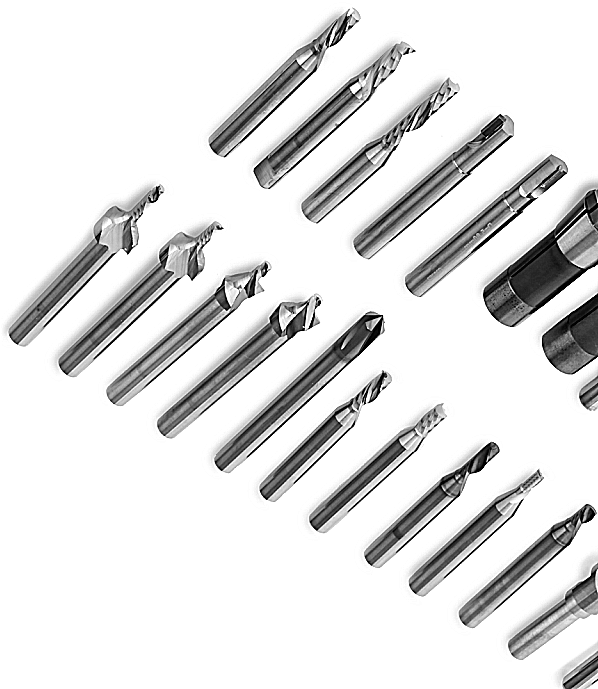How to choose and use Esko Kongsberg Milling & Router Bits correctly
To choose and use Esko/Kongsberg milling and router bits correctly, consider the following key points based on the material, bit type, machine features, and proper handling techniques:
Choosing the Right Milling & Router Bits
· Material Compatibility: Select bits according to the material you will process:
Acrylic and plastics typically require high-speed router bits with air cooling for edge quality.
MDF and wood use specific router bits designed for these substrates.
Aluminum Composite Material (ACM) and aluminum require specialized bits such as folding bits for bending or diamond-coated router bits for precision milling.
Foam boards and soft materials often use oscillating knives rather than milling bits.
Paper, cardboard, and folding cartons use drag or oscillating knives, not router bits.
· Bit Type:
Up-cut bits are generally used for most jobs because they evacuate chips upwards.
Down-cut bits are used when you want to avoid lifting or chipping on the top surface, for example, when milling rigid materials like acrylic.
Special bits include etching bits for detailed engraving and folding bits for bending ACM panels.
· Bit Size and Shank Diameter:
Standard bits often have a 6 mm shank, but for heavy-duty milling, especially with thicker materials (30-50 mm), 8 mm shank bits are preferred for better stability and accuracy.
· Bit Material:
Carbide bits are recommended for durability and long life across various materials.
Diamond-coated bits are used for high-precision milling of acrylics and composites.
Using the Bits Correctly
· Machine Setup and Calibration:
Use the Kongsberg system’s air-chuck and switch-operated bit exchange for quick and tool-free bit changes.
Calibrate the router bit height and tabletop reference after each bit change using the machine’s automatic tool leveling and calibration features to maintain cutting depth accuracy.
· Cooling and Dust Management:
Utilize the air-cooling feature on the MultiCUT spindle to improve edge quality and extend bit life, especially when milling acrylic and synthetic materials
Adjust the dust boot to float just above the material to control dust and debris effectively during milling
· Speed and Feed Rates:
Use the correct RPM and feed speed settings for the bit and material combination. For example, the High-Speed Milling Unit can run up to 60,000 RPM.
Reduce X/Y feed speed for better quality when necessary, especially on delicate or detailed cuts.
· Maintenance and Sharpness:
Always use sharp bits to ensure clean cuts and prevent damage to the material or machine.
Replace bits when dull or damaged to maintain quality and efficiency.
Summary Table for Bit Selection Based on Material
|
Material |
Recommended Bit Type |
Notes |
|
Acrylic & Plastics |
High-speed router bit (carbide or diamond-coated) |
Use air-cooled bits for edge quality |
|
MDF & Wood |
Router bits with 6-8 mm shank |
Use down-cut bits to avoid lifting top surface if needed |
|
Aluminum Composite (ACM) |
Folding bits or diamond-coated bits |
For folding and precision milling |
|
Foam Board & Soft Materials |
Oscillating knives |
Not typically milled |
|
Paper & Cardboard |
Drag knives or oscillating knives |
For clean cuts |
|
Textiles & Vinyl |
Rotary or kiss-cut knives |
To prevent fraying |
By following these guidelines—selecting the appropriate bit type, ensuring proper machine calibration, using cooling features, and maintaining sharpness—you can achieve optimal milling and routing performance on Esko/Kongsberg cutting systems
PREV : Atom 01044436 01030776 01043086 Cutter Carbide Knives / Blades Specifications Use Buy For Sale NEXT : MultiCam 003612-MC142568 84-00193-BT-57235 AXYZ B1031L-35 Carbide Flat Point Knife Blades Parts






